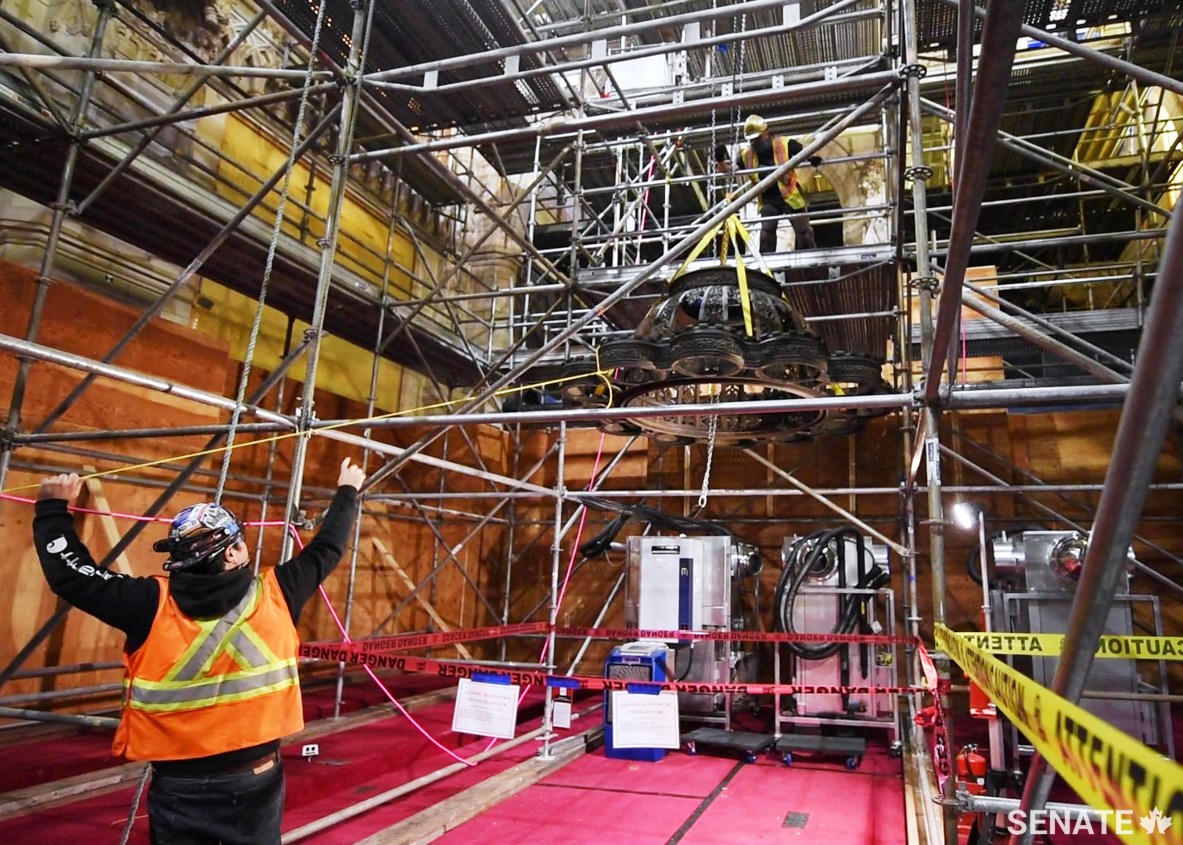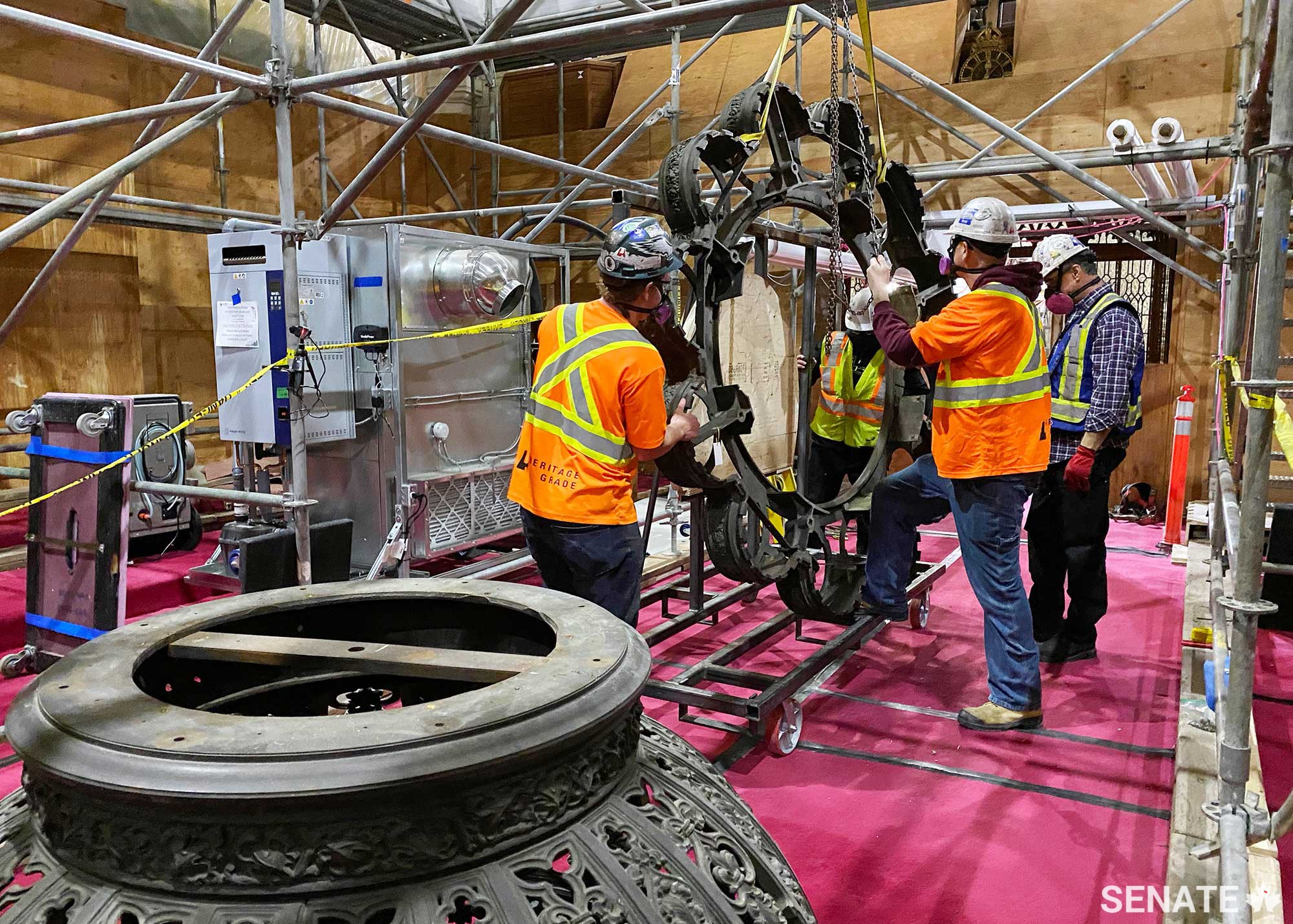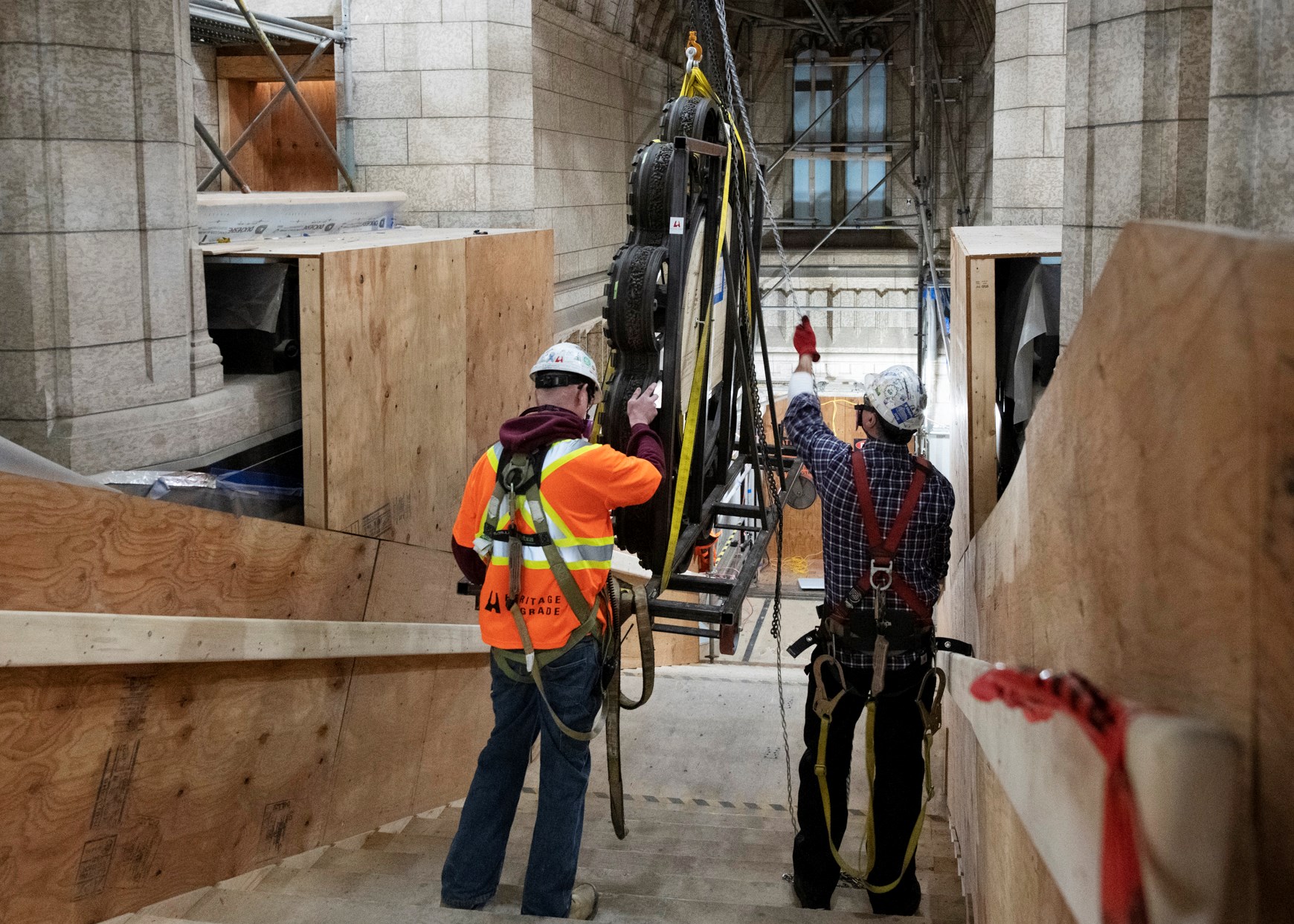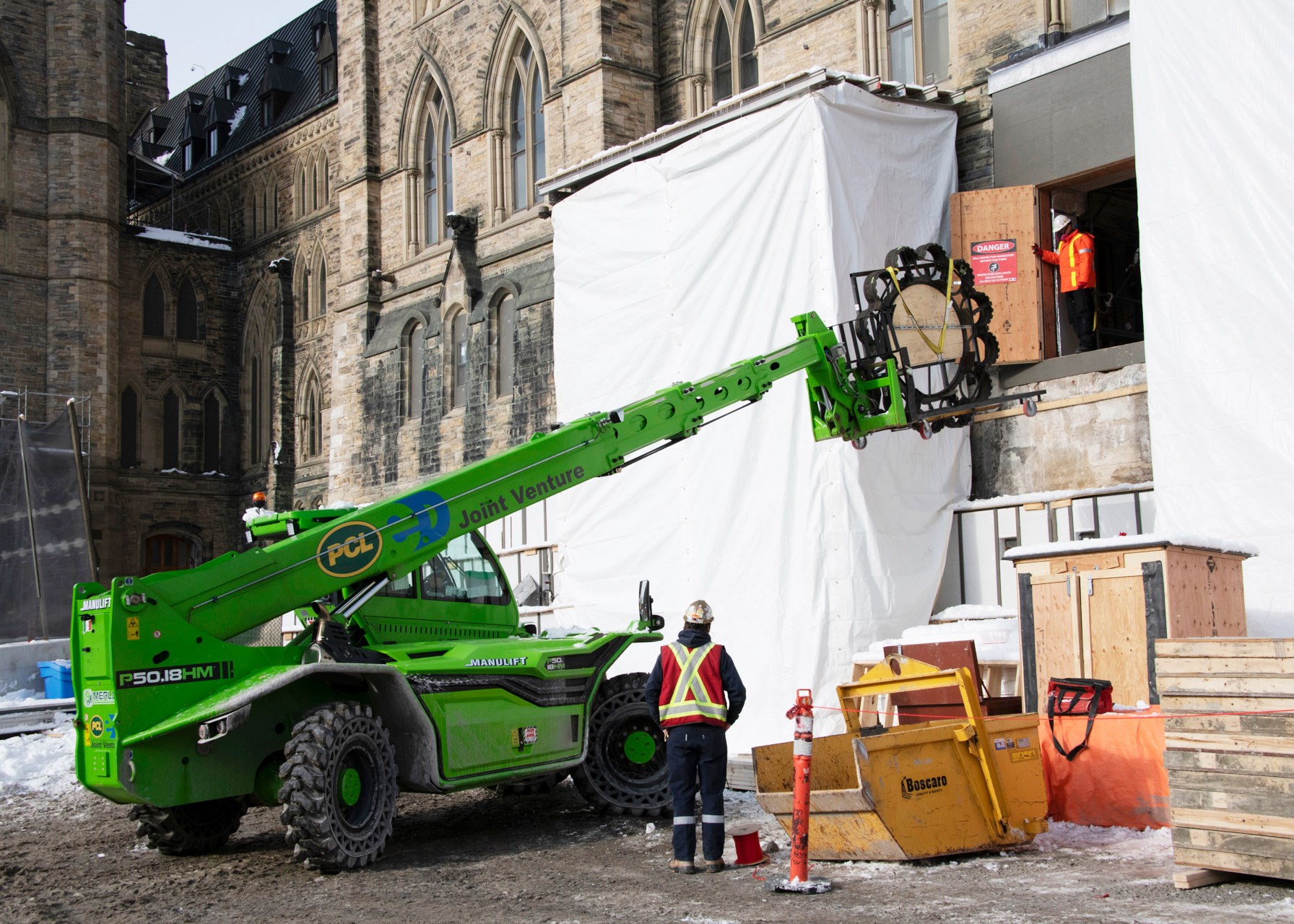Bronze beauties: Spotlighting the Senate Chamber’s two chandeliers

In February 2019, the Senate moved to the Senate of Canada Building, a former train station built in 1912. The Senate will occupy this temporary location while Parliament’s Centre Block — the Senate’s permanent home — is rehabilitated.
Although Centre Block is shuttered for rehabilitation work, Canadians can still experience its art and architecture through the Senate’s immersive virtual tour.
For nearly 100 years, two enormous bronze and cast-iron chandeliers have hung from the magnificent gilded ceiling of the Senate Chamber in Centre Block, illuminating the room’s stunning features.
Despite being central fixtures in the Red Chamber for so long, the origins of the identical chandeliers remained a bit of a mystery — that is, until experts took a closer look and uncovered more details before the huge lights were temporarily dismantled as part of Centre Block’s rehabilitation.
It turns out the custom chandeliers represent an extraordinary three-tonne feat of lighting manufacturing, according to the co-founder of the company contracted to oversee their removal.
“It’s hard for me to find anything more spectacular than these Senate chandeliers,” said Chris Nelson, whose company, Lighting Nelson & Garrett, specializes in lighting design and restoration and has worked on heritage projects across the country.
“There’s an art to these that’s really worth celebrating.”
During Centre Block’s reconstruction following the destructive fire of 1916, chief architect John A. Pearson travelled to New York City to discuss designs for the new Senate Chamber chandeliers with the Mitchell Vance Company, a renowned American lighting manufacturer at the time.
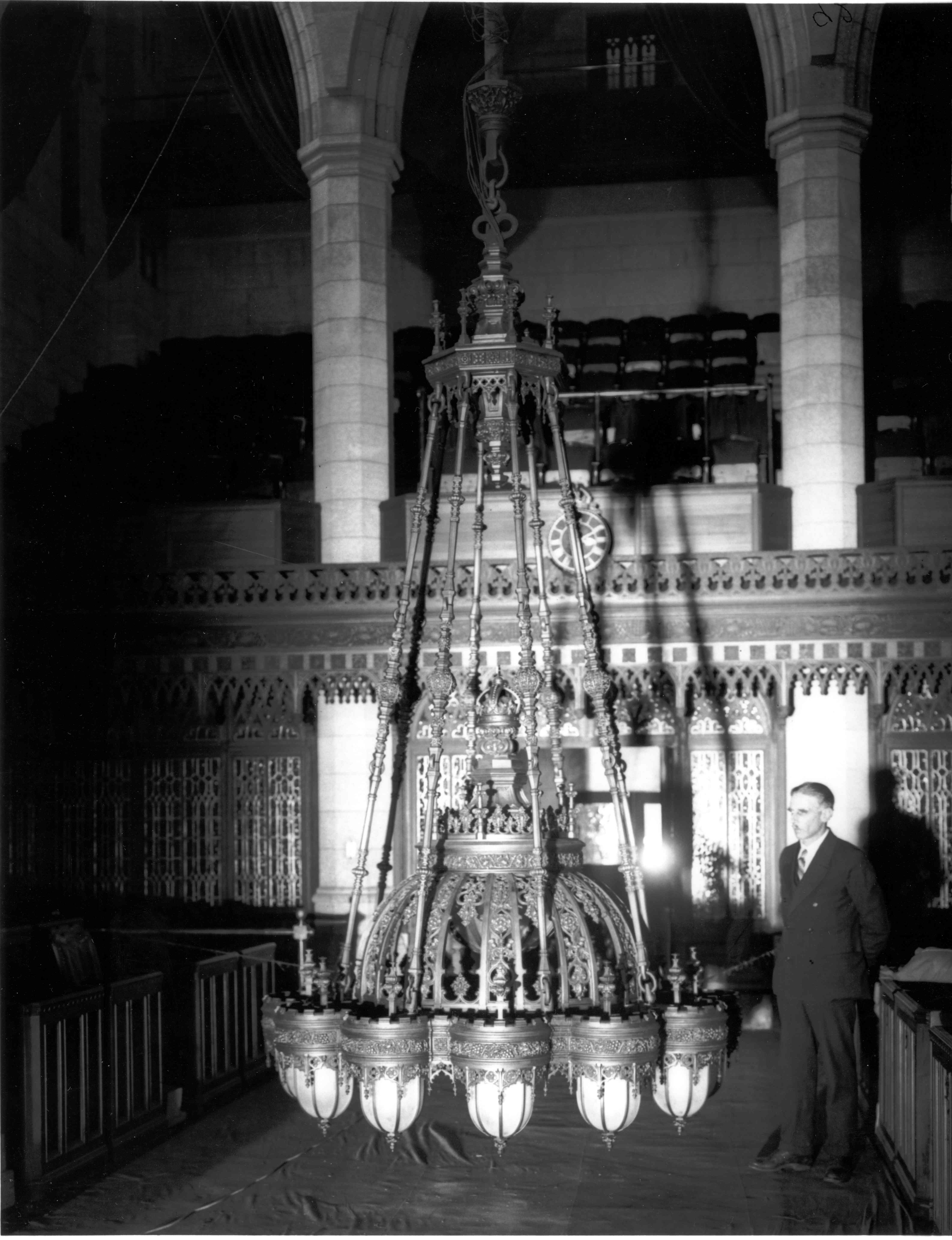
The Department of Public Works ultimately selected the final design from Mitchell Vance but contracted a Canadian firm, the Robert Mitchell Company, to manufacture the massive fixtures.
Craftsman Cléophas Soucy — who oversaw Centre Block’s carving team and became Parliament’s first Dominion Sculptor — modelled the intricate chandelier in clay. The model was then cast and assembled at the Robert Mitchell metal foundry in Montreal.
To achieve the desired finish, the fixtures were burnished with nitrate of copper under the supervision of Paul Beau, Parliament’s head ironmaster. Once ready, the chandeliers were shipped in pieces to Ottawa and installed in the Senate Chamber in 1926.
How exactly engineers hoisted the fixtures, though, is still unclear. Almost a century later, Mr. Nelson and his team had to devise a plan of attack from scratch in order to remove the chandeliers for protection and restoration.
Find out how they pulled it off, and take a closer look at the features that place these chandeliers among Parliament’s heritage masterpieces:
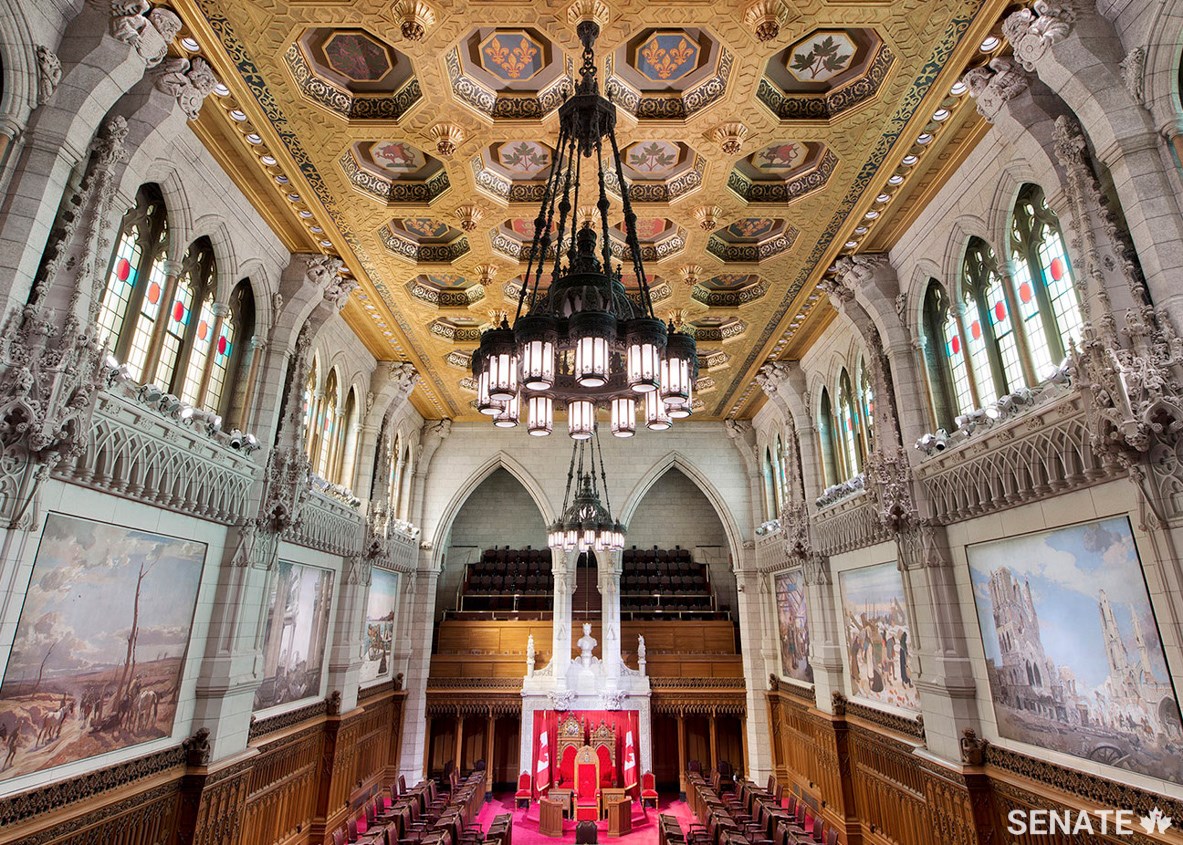
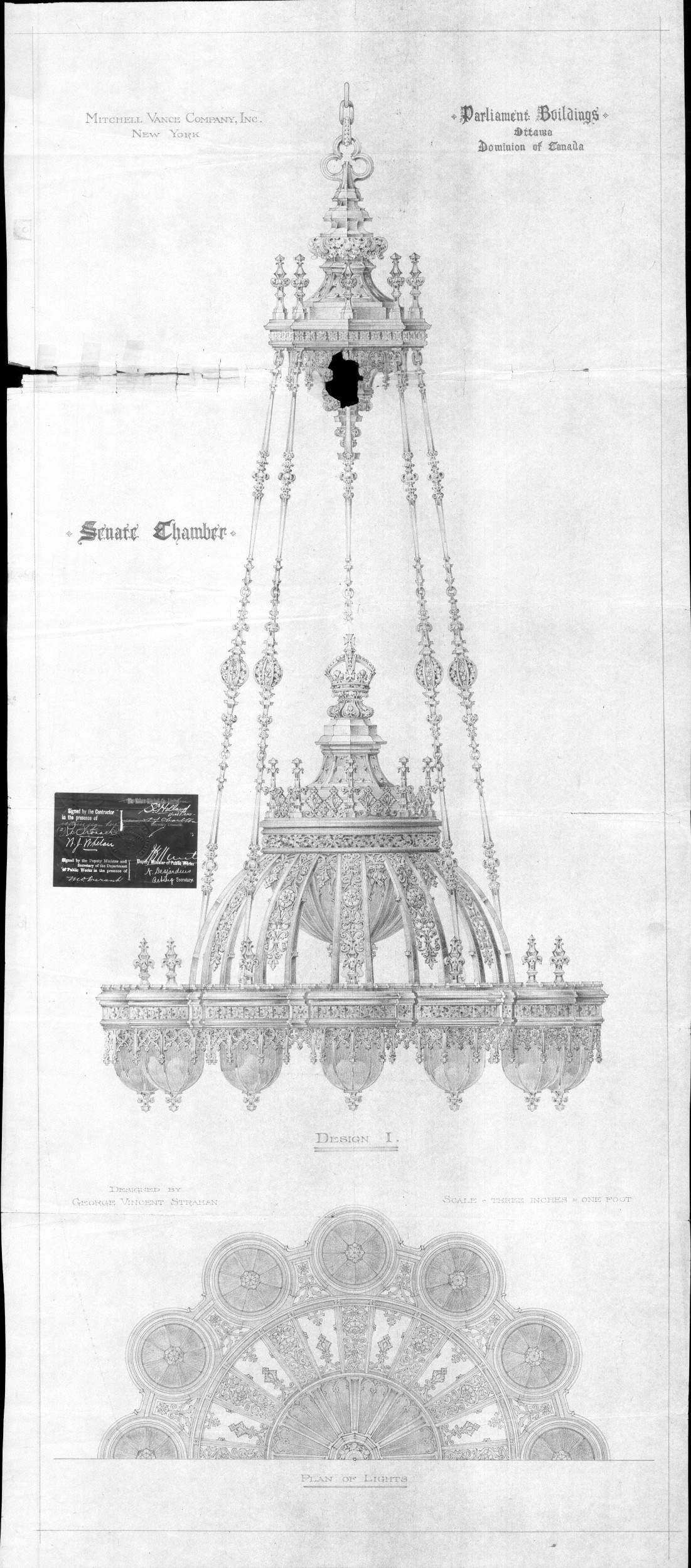
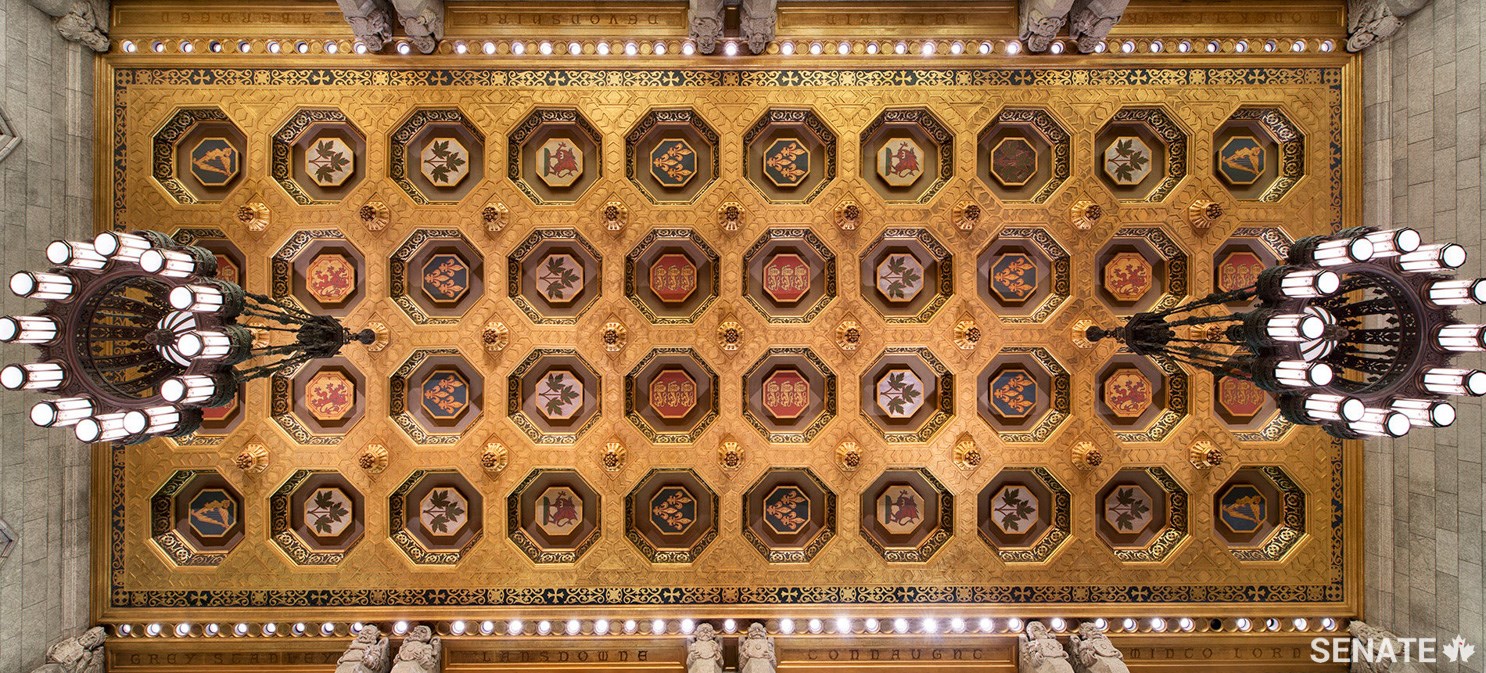
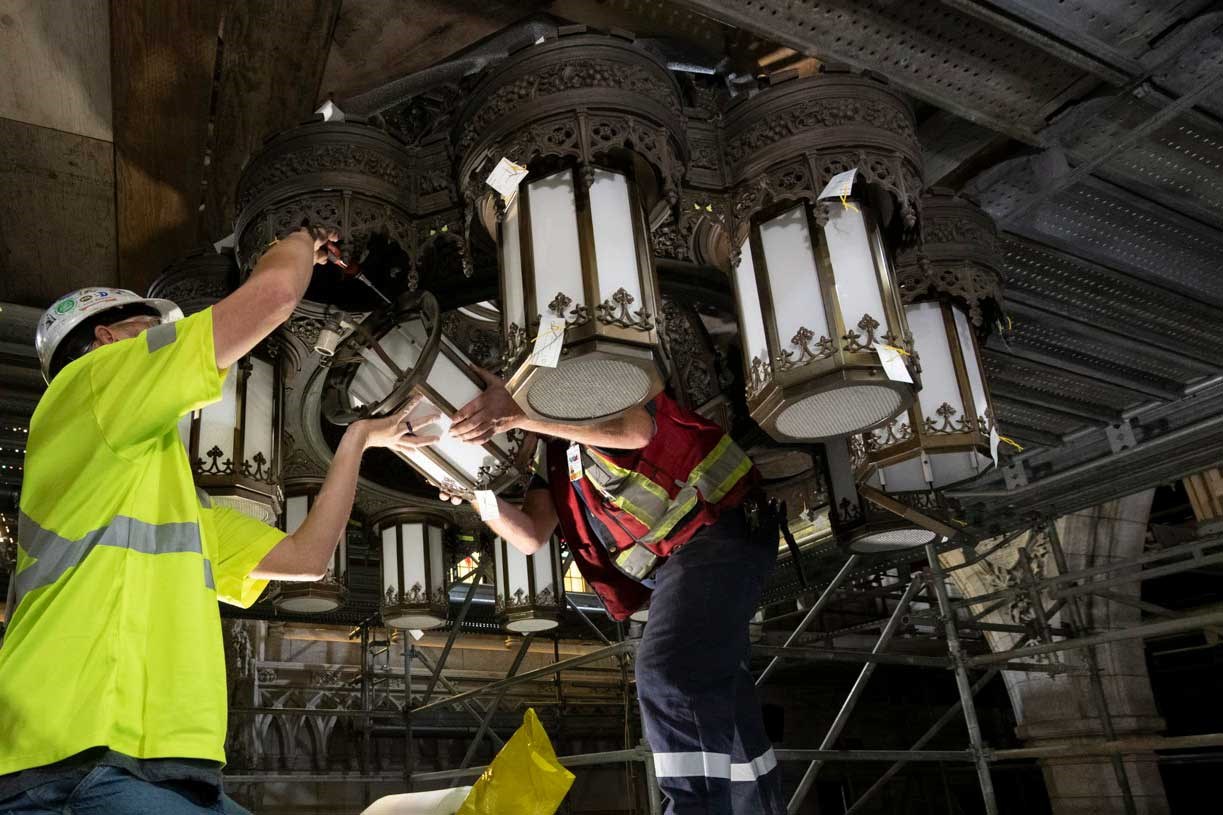
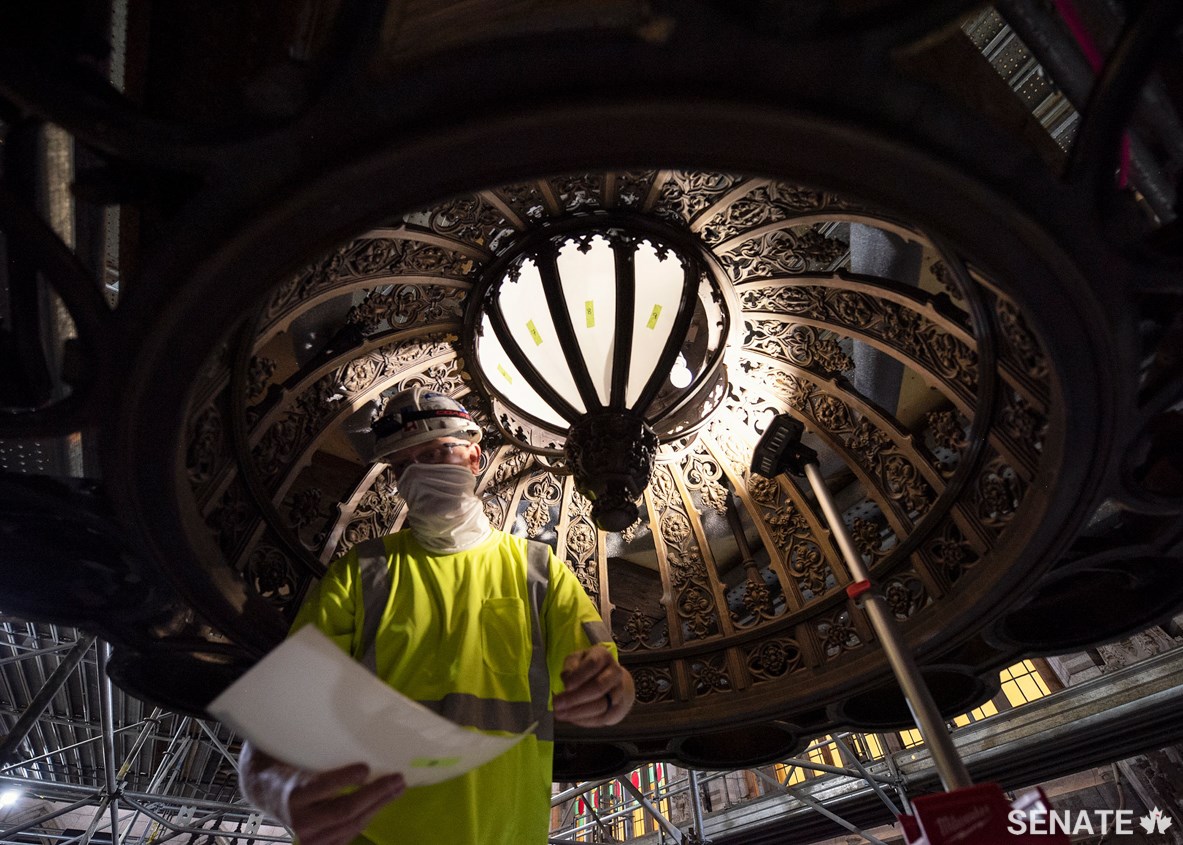
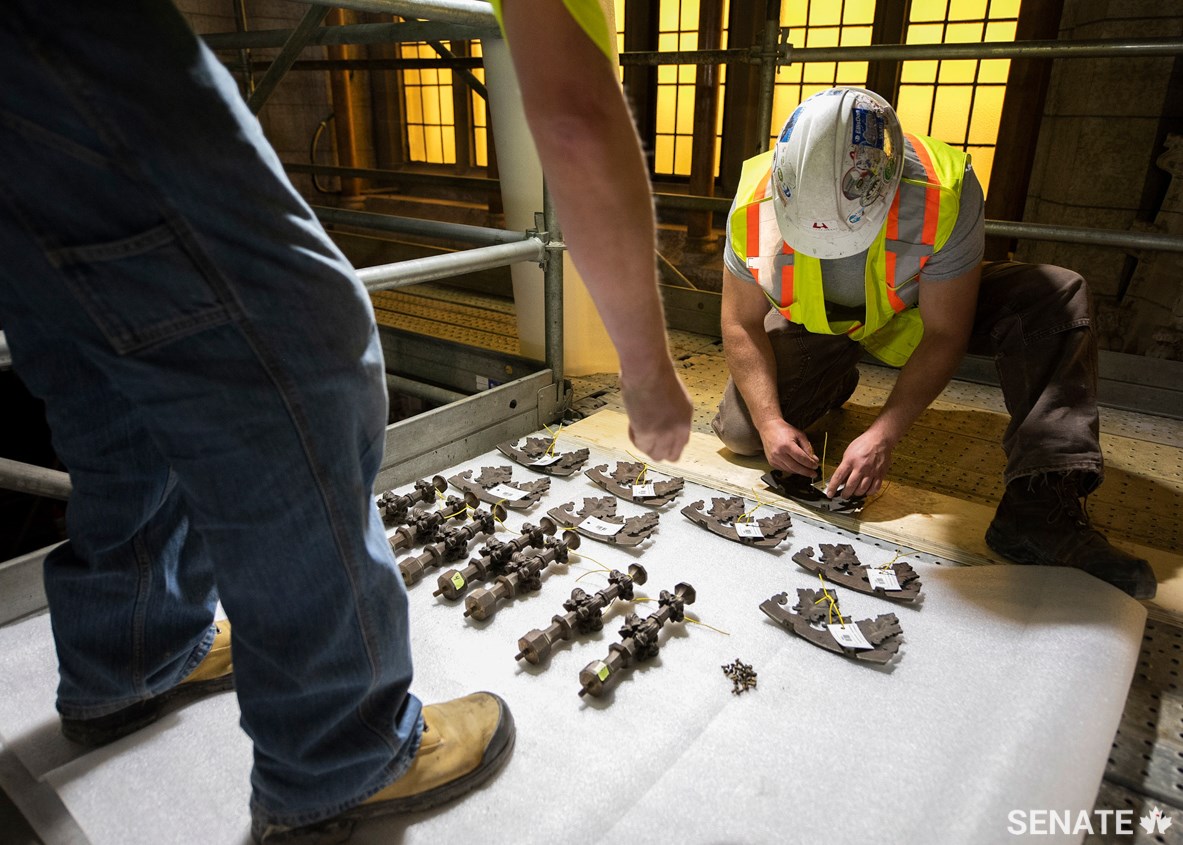
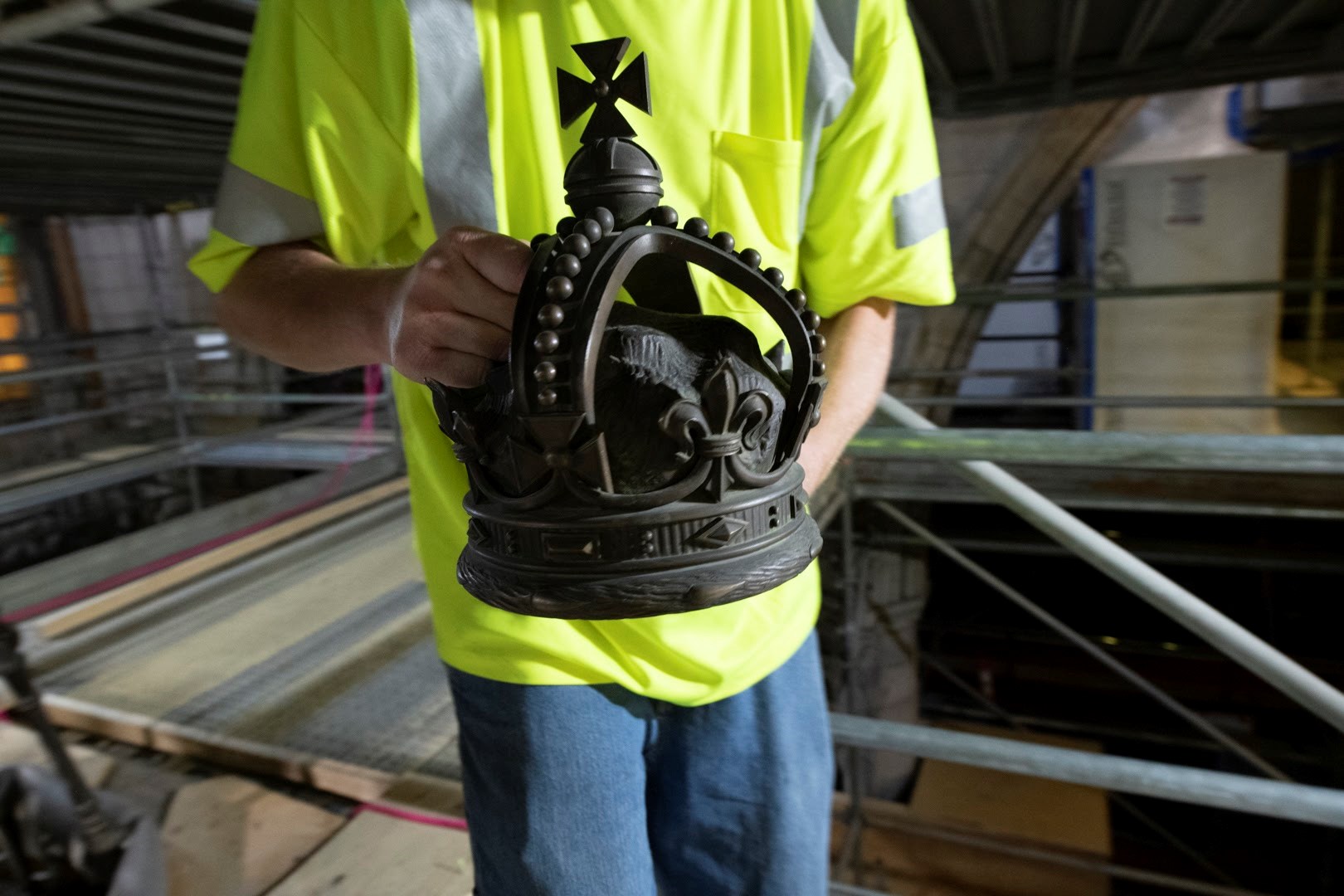
A worker holds the crown that caps the top of the chandelier’s dome. The cross that rests on the top of the crown must face the Speaker of the Senate, who enforces the Red Chamber’s rules and presides over proceedings. (Photo credit: Public Services and Procurement Canada)
